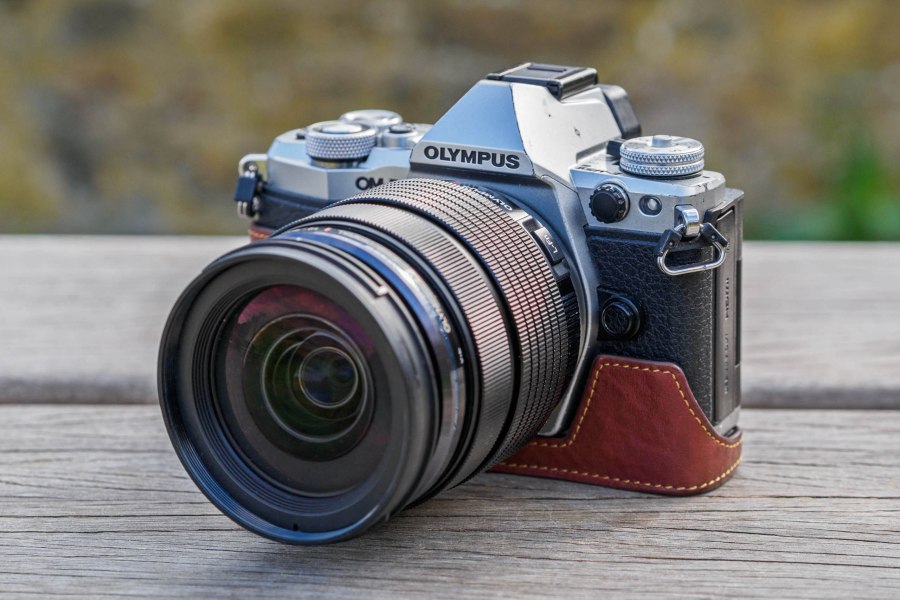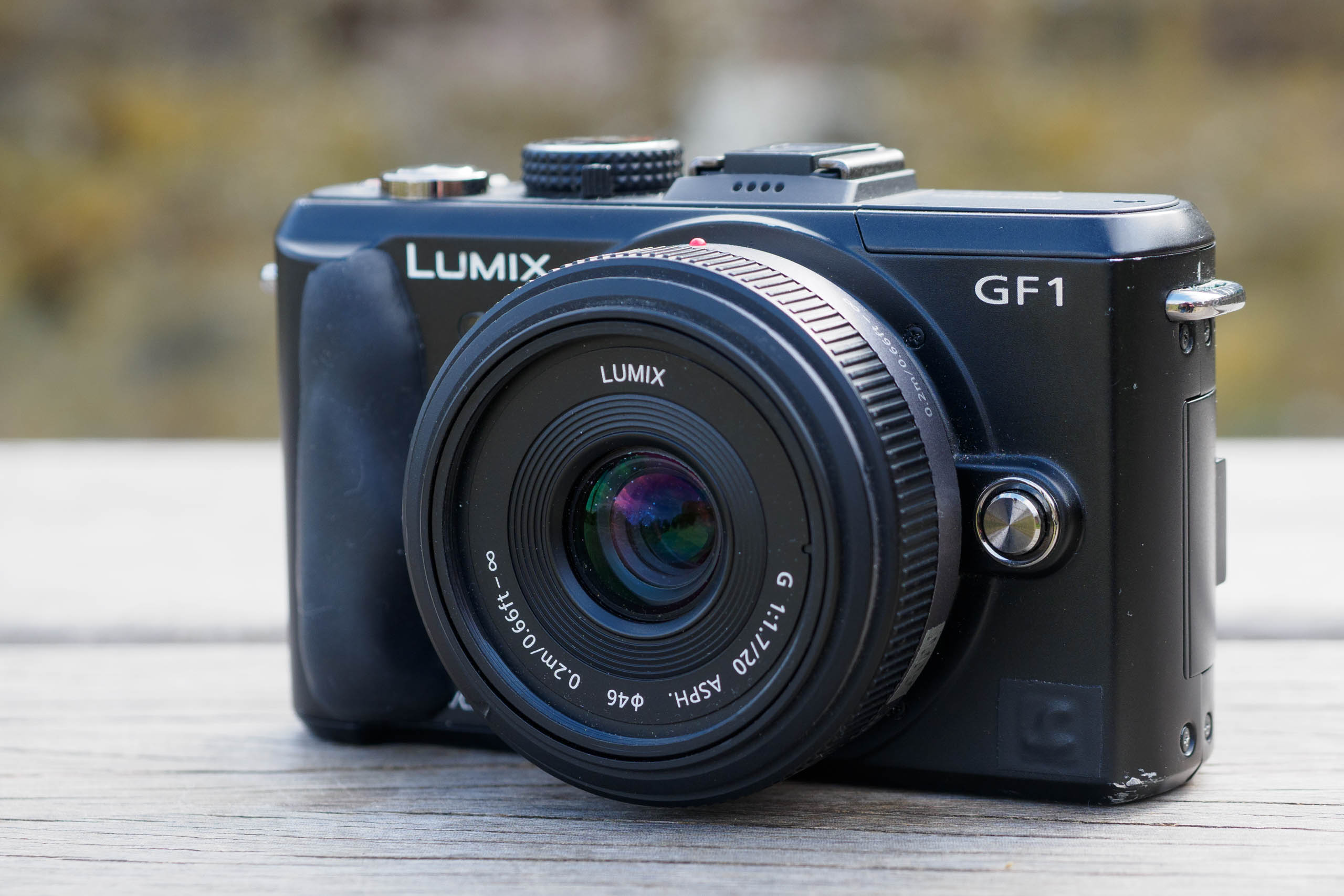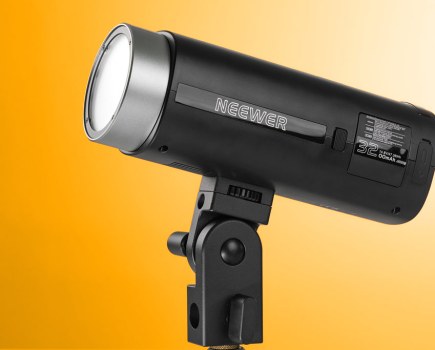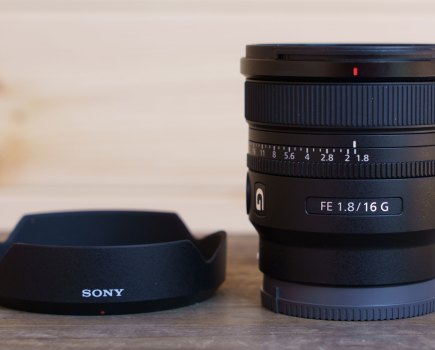Olympus OM-D E-M5 Mark II at a glance:
- 16MP Four Thirds sensor
- ISO 100-25,600
- 10fps continuous shooting
- 2.35m-dot EVF, 0.74x magnification
- 3in, 1.07m-dot articulated touchscreen
- 5-axis in-body stabilisation
- £300-400 second-hand
I have to admit, I’m privileged to have something of a dream job. Not only do I get to try out all the latest and greatest kit, I’m paid to offer my opinion on it. Over the past few years, I’ve reviewed such impressive cameras as Fujifilm’s 102MP medium-format GFX100S, Sony’s 50MP Alpha 1 that can shoot at 30 frames per second, and the sublime black & white-only Leica M10 Monochrom. So why is that when I set out to take pictures for my own pleasure, the camera in my hand has generally been the Olympus OM-D E-M5 Mark II?
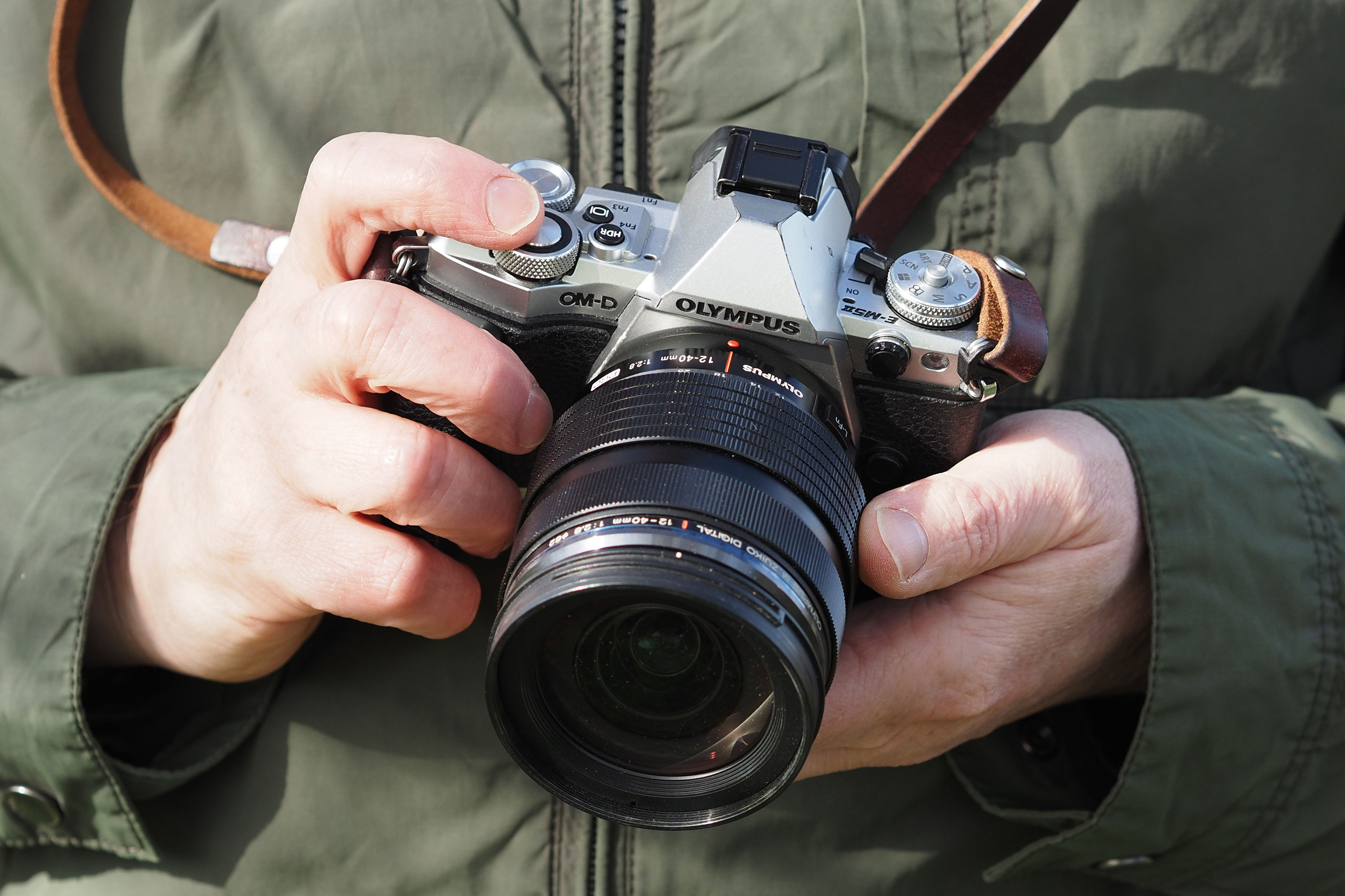
The Olympus OM-D E-M5 Mark II has been my camera of choice for the past six years, mostly fitted with the superb Olympus 12-40mm f/2.8 Pro
The answer to this is long and multi-faceted. It’s about the appeal of certain type of small, tough, fully-featured camera, along with the fantastic choice of lenses available to use on it. But there’s also a wider story of how the market benefits from choice, and why I really hope that smaller sensor formats don’t get pushed aside by the current obsession with full-frame.
Why Micro Four Thirds?
I’ve been a fan of the Micro Four Thirds system right from the start. When I first got to use the world’s first mirrorless camera, the Panasonic Lumix G1, back in 2008, I really liked the concept. It had plenty of rough edges, but I appreciated the idea of a small camera with an electronic viewfinder and fully articulated screen that used tiny, lightweight lenses.
I didn’t buy one, though; that had to wait a year for the rangefinder-style Lumix GF1, which could be bought in a kit with a fabulous 20mm f/1.7 pancake lens. At the time it felt like the perfect complement to my Canon EOS 5D full-frame DSLR, in much the same way as I’d previously used compact 35mm rangefinders with film. The small camera was no replacement for the DSLR, but perfect for particular uses – for example many people clearly felt more comfortable facing it.
When Olympus introduced its original OM-D E-M5 in 2012, it felt like a considerable step up for both the company, and the concept of mirrorless cameras in general. Where previously they’d been pitched as being for casual users who were put off by the size, weight and complexity of DSLRs, this was unashamedly a premium model aimed at enthusiasts, with a weather-sealed metal body and dual-dial control. It captured the imagination of many photographers and sold well, inspiring other companies to build similar SLR-like designs.
With Olympus and Panasonic using the same Micro Four Thirds mount, the E-M5 also took the same lenses as my GF1. I bought one and quickly found myself using it in preference to my DSLR, especially when Olympus introduced the superb 12-40mm f/2.8 Pro lens eighteen months later. By early 2015, I’d accrued a small set of Micro Four Thirds lenses, including the lovely Olympus 45mm f/1.8 portrait lens and the lightweight, but surprisingly decent 40-150mm f/4-5.6 telezoom. So when Olympus launched its next-generation model, I already had a foothold in the system.
Silly name, lovely camera
I blame Canon for the sorry state of camera names. When the time came to for it replace the iconic EOS 5D, the firm decided that the model number had become a brand all of its own. So it announced the EOS 5D Mark II, unwittingly paving the way for the other camera makers to indulge in a perplexing alphabetty spaghetti of letters, numbers and marks. But Olympus took this to new depths with its love of random hyphenation, meaning we got the OM-D E-M5 Mark II. Unlike the best product names, it doesn’t so much roll off the tongue as twist it.

Weston-super-Mare, 2015. This moody monochrome shot is a camera JPEG with no extra manipulation. Olympus 12-40mm f/2.8 Pro at 40mm, 1/5000sec at f/5.6, ISO 200
But what a lovely little camera the E-M5 II turned out to be. It didn’t actually offer much advance over its predecessor in terms of image quality; indeed a headline spec comparison might leave you thinking there wasn’t much new. As before it was based around a 16MP Four Thirds sensor measuring 17.3 x 13mm (roughly half the area of APS-C, and a quarter that of full frame), which delivered a standard sensitivity range of ISO 200-25,600 and continuous shooting at up to 10 frames per second. But it came with innumerable updates and improvements, some of which were very significant indeed.
It should go without saying that the viewfinder is one of the most important parts of a camera. It’s your window on the world, showing you how to compose your images and when to press the shutter button. The E-M5 II’s is impressively large, with a 0.74x equivalent magnification, while its 2.36m-dot resolution provides a nicely detailed view. It’s a big advance on the E-M5’s 1.44m-dot, 0.57x unit and even now, provides one of the best viewing experiences you’ll find on a sub-£1000 body, especially one this small.

Wells Cathedral, 2015. Olympus’s Pro lenses give excellent results while being small and lightweight. Olympus 12-40mm f/2.8 Pro at 14mm, 1/15sec at f/2.8, ISO 200
This fine EVF is complemented by a 3in touchscreen that’s fully articulated, in contrast to its predecessor’s tilt-only design. We can argue ad nauseam about which design is ‘better’; tilt screens are certainly quicker to flip out, and particularly well suited to waist-level street shooting. But to me the clincher is that tilt screens instantly become useless for high- or low-angle shooting when you rotate the camera to portrait format, whereas fully articulated screens keep on working. I don’t expect to buy a camera with a fixed or tilt-only screen ever again.
Other key improvements included 81 autofocus points rather than 35; a top shutter speed of 1/8000sec vs 1/4000sec; and built-in Wi-Fi for smartphone connectivity. At the time in-body image stabilisation was still something of a rarity, but the E-M5 II’s was the best around, promising (and often delivering) 5 stops of shake reduction. This was also the first camera outside of the high-end medium-format sector to include a high-resolution multi-shot mode, although in practice the need for a totally static subject makes it of limited usefulness.

High resolution multi-shot mode and moving subjects really don’t mix!
Over time, I’ve really come to appreciate some of the camera’s less-lauded features. For example, the Quick Sleep option is great for maximising battery life, by turning off live view a couple of seconds after you take your eye from the viewfinder. Cleverly, it’s only activated when the LCD is set to show a status panel rather than live view, so it doesn’t constantly turn off the screen when you’re using the camera on a tripod.
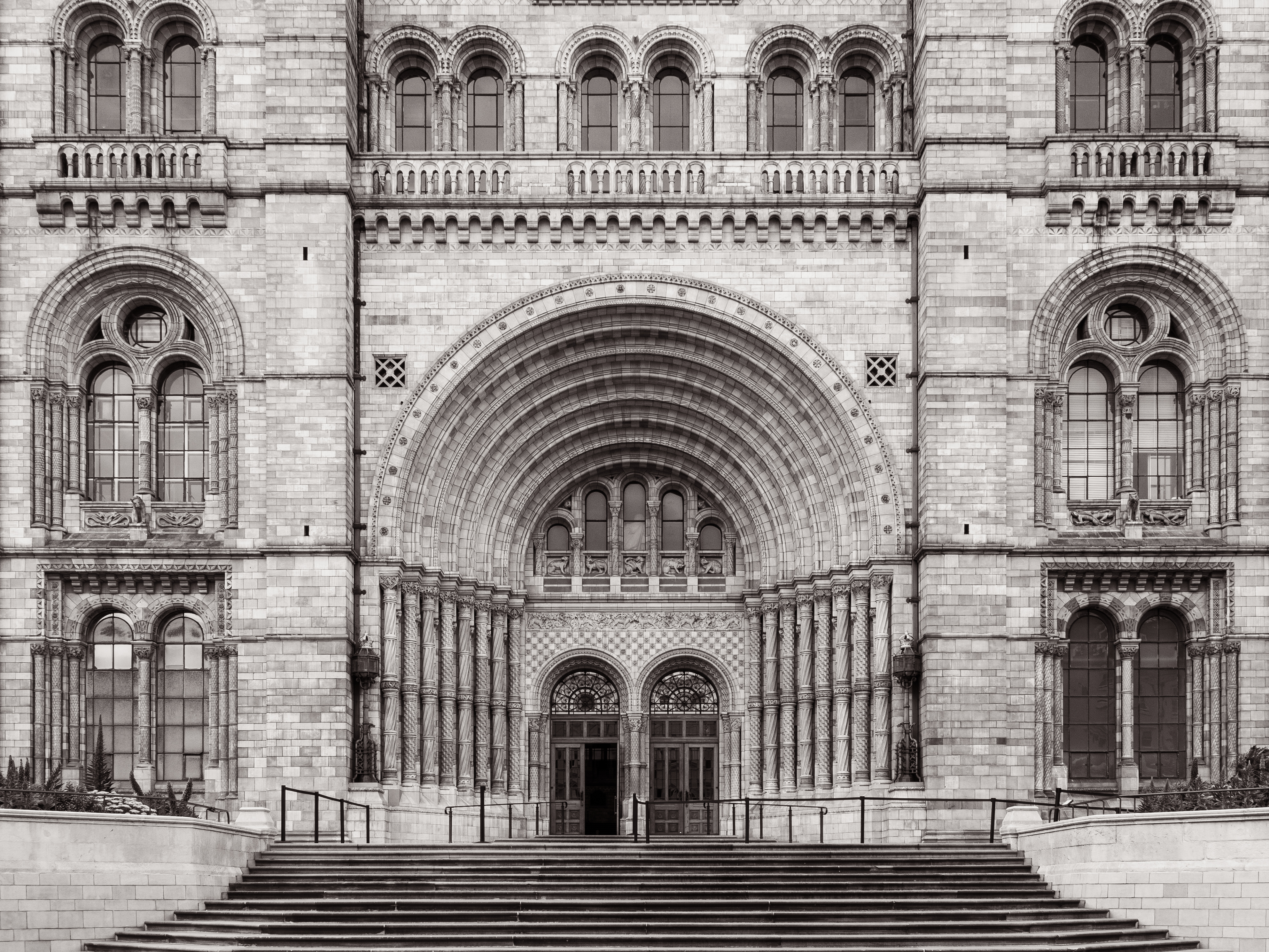
London, 2019. Here I exploited in-camera keystone compensation to visualise my composition. Olympus 12-200mm f/3.5-6.3 at 17mm, 1/160sec at f/5.6, ISO 200
I’m also a big fan of Olympus’s keystone compensation function, which allows converging verticals or horizontals to be corrected in-camera, with a live preview in the viewfinder. This is really helpful even if you fully intend to process your final image from raw, because it helps you get the framing and zoom right, which isn’t a given otherwise.
Super handling
With its compact magnesium alloy body and perfectly placed dual control dials, the E-M5 II is also a lovely camera to shoot with. Even if I haven’t used it for a while, I can pick it up and get going instantly, without having to re-familiarise myself with how everything works. It has a wonderfully soft, well-damped shutter, which means you can shoot discreetly without drawing attention to yourself. Olympus’s tough build quality and effective weather-sealing means that you don’t have to baby it, either.
It’s a good-looking beast, too; perhaps not as drop-dead gorgeous as the rangefinder-esque PEN-F that came a few years later, but far more charismatic than plain-Jane contemporaries such as the Sony Alpha 7 II and Panasonic Lumix G7. The only camera capable of matching it for retro-cool styling at the time was Fujifilm’s X-T1.
While the E-M5 II’s petite frame is a fine match for small primes and zooms, it’s not so great with larger lenses. I tend to use it with a fitted leather half-case at least, which adds a bit more purchase while adding minimal extra bulk. For shooting with larger lenses I’ll fit the ECG-2 handgrip, which is also really handy for shooting from a tripod, thanks to its Arca Swiss dovetail baseplate. It’s a shame Olympus doesn’t make the equivalent grip for the current E-M5 III, but thankfully several enterprising Chinese companies do.
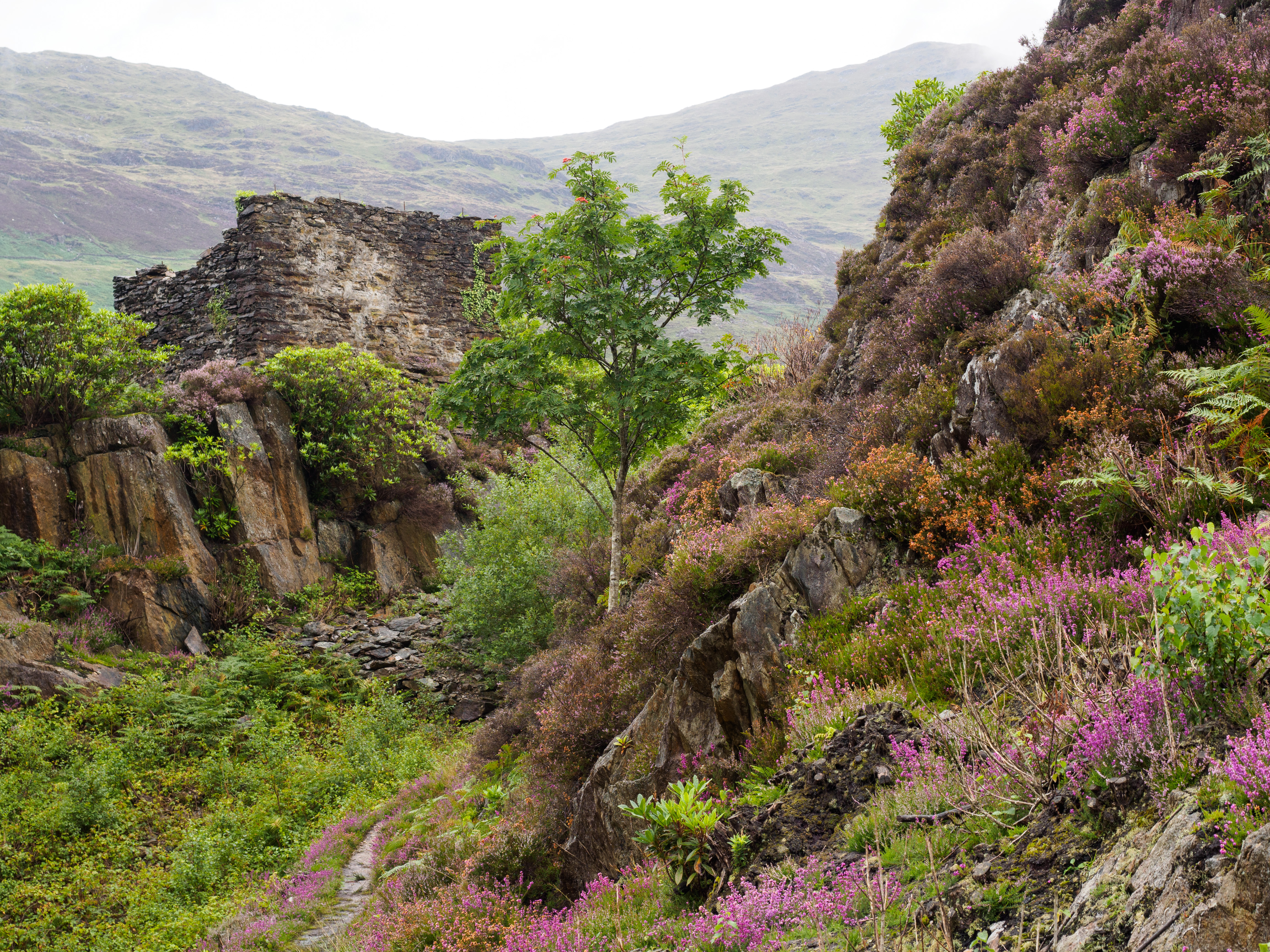
Snowdonia, 2015. My E-M5 II is the heart of a rugged, easy-to-carry system. Olympus 12-40mm f/2.8 Pro at 32mm, 1/80sec at f/5.6, ISO 200
To be honest, I’m not actually a huge fan of the E-M5 II’s out-of the-box setup. At the time, Olympus based its cameras around what it called a 2×2 control scheme, where a switch beside the viewfinder toggled the control dials between changing either exposure settings, or ISO and white balance. It sounds like a good idea, but it’s all-too-easy to find yourself twiddling the dials when they’re in the wrong mode and ending up with completely the wrong settings.
The camera also has a prominent button on the top plate to engage HDR mode, which I rarely use. But this being Olympus, almost every aspect of the camera’s operation can be customised. So I set the HDR button to access ISO and white balance, and reconfigure the switch to select between auto and manual focus, which to my mind works much more sensibly. Olympus seems to have retrospectively agreed, because its current models work in much the same way.
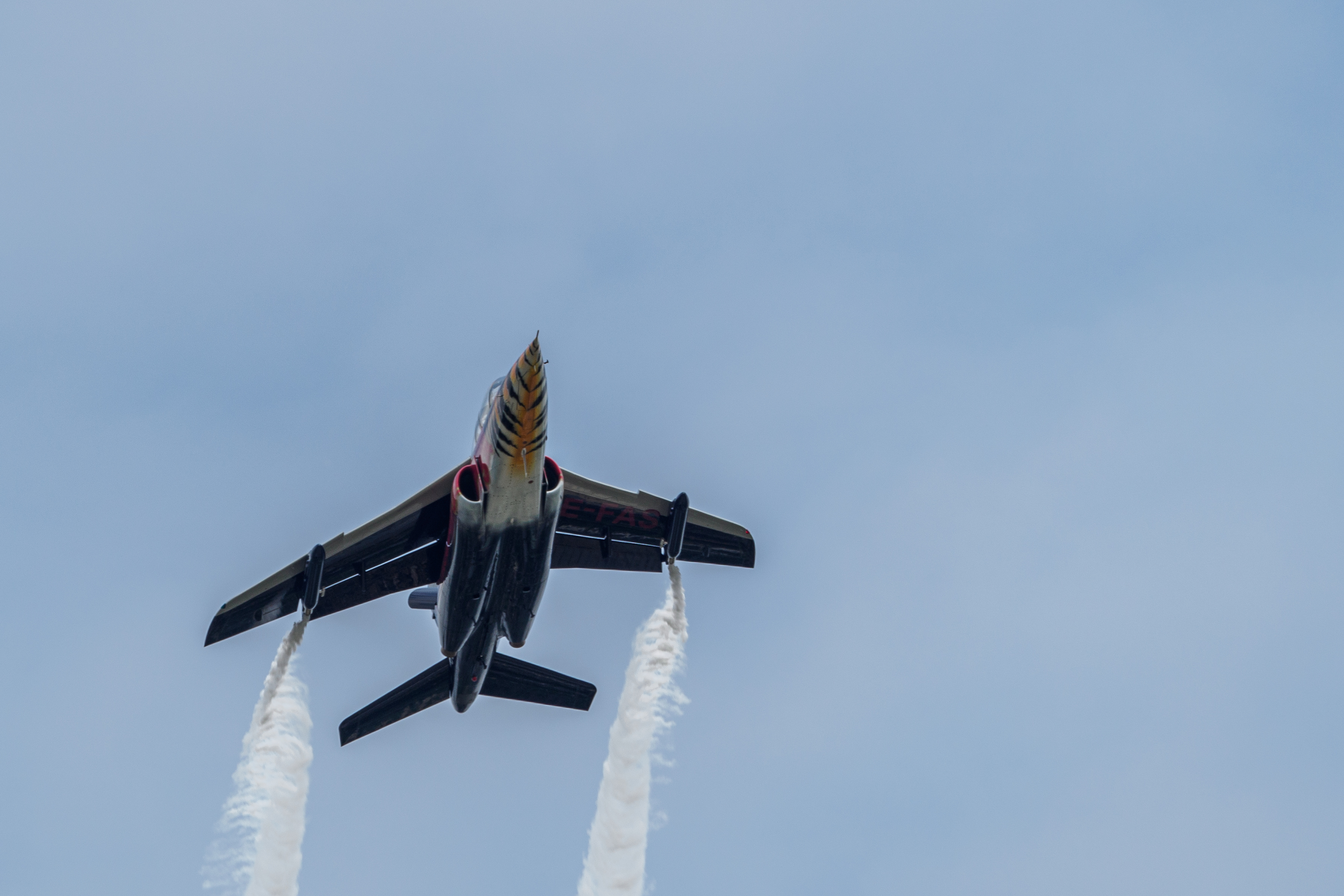
Farnborough, 2018. Autofocus is a weakness, but with patience and a bit of luck you can get decent action shots. Olympus 40-150mm f/2.8 Pro + MC-14, 420mm, 1/1000sec at f/4, ISO 100
I’m not going to pretend that the E-M5 II is perfect. Most obviously, it relies purely on contrast detection for autofocus, which works really well with static subjects but struggles with anything that moves. It doesn’t entirely preclude you from getting some decent action shots, but your chances are much lower compared to any camera that uses phase detection AF. As for Olympus’s menu system, the less said about that the better.
It’s the lenses, stupid
While I love shooting with the E-M5 II, ultimately one of the biggest attractions of Micro Four Thirds is the lens range. There are two reasons for this. First is the fact that the system was built up simultaneously by two major manufacturers. This means that you usually have a choice between at least two options for any given type of lens, so you can pick which best fits your needs. I’m completely brand-agnostic in this respect, and use a mix of Olympus and Panasonic glass, along with a few third-party options such as the lovely Sigma 56mm f/1.4 DG DN.
Secondly, Micro Four Thirds had the undivided attention of both firms for a decade, with neither trying to push customers onto a full-frame ‘upgrade path’. This means that, unlike most APS-C systems, there’s a strong selection of high-end weather-sealed lenses available that are specifically matched to the sensor. Both Olympus’s PRO range and Panasonic’s Leica-badged offerings are consistently superb.

Prague, 2015. The Micro Four Thirds system includes an array of tiny primes for shooting in low light. Olympus 45mm f/1.8, 1/80sec at f/1.8, ISO 1600
And really, it’s this embarrassment of optical riches that Micro Four Thirds is all about. The entry-level zooms are remarkably small and light, which is great when you don’t want to carry a large, heavy bag. There’s also a good range of tiny, relatively affordable primes with apertures around the f/1.8 mark that allow you to shoot indoors using natural light, while giving a useful degree of background blur.
Go higher up the range and you’ll find some stunning lightweight zooms, such as the aforementioned Olympus 12-40mm f/2.8 and the Panasonic Leica 8-18mm f/2.8-4 wideangle. Last but not least, there are some really impressive long telephotos, with both firms offering relatively affordable 300mm zooms as well as high-quality 100-400mm lenses. Few other systems can deliver 600mm or 800mm equivalent reach via small, readily hand-holdable zooms.

Knole Park, 2020. The relatively small sensor enables great telephoto reach from small, light lenses. Panasonic 100-300mm at 300mm, 1/200sec at f/8, ISO 6400
Ultimately if you compare MFT to larger sensor systems, the fact is that you can get more compositional flexibility in terms of zoom range, and much more telephoto reach, into a bag of any given size and weight. Only Fujifilm’s APS-C X-system really comes close. Full frame offers a different set of strengths, most obviously a much greater ability to blur backgrounds using large apertures, but good luck with matching the small primes and long telephotos.
What’s in my bag?
When I’m out shooting with my E-M5 II, my usual lens set comprises the Panasonic Leica DG 8-18mm f/2.8-4, Olympus M.Zuiko Digital ED 12-40mm f/2.8 Pro, and the Olympus M.Zuiko Digital ED 40-150mm f/2.8 Pro with its matched 1.4x teleconverter. Together, these provide a 16-420mm equivalent range for a total weight of well under 2.5kg and fit easily into my small Billingham F2.8 shoulder bag.

My Olympus OM-D E-M5 Mark II fitted with the ECG-2 grip and the 12-40mm f/2.8 Pro, along with the Panasonic Leica 8-18mm f/2.8-4, Olympus 40-150mm f/2.8 Pro, and the latter’s matched 1.4x teleconverter
All of these lenses are weather-sealed, and crucially deliver consistently stunning image quality, even when used wide open.
The elephant in the room
Ultimately, these small lenses are all made possible by the relatively small size of the Four Thirds sensor. But larger sensors promise higher image quality, because their increased surface area means that they capture more light when taking a picture at any given shutter speed, aperture and ISO combination. In the quantum world of digital imaging, more light means a higher signal-to-noise ratio, which as a rule will translate to cleaner images with greater dynamic range. Larger sensors (or more accurately, lenses with larger entrance pupils) are also capable of delivering increased background blur in situations where you want to isolate your subject.

Ronda, Spain, 2016. Image quality from the MFT sensor has held up well here, despite huge tonal adjustments in raw processing, aided by pre-treatment of the raw file in DxO PureRAW. Olympus 7-14mm f/2.8 Pro at 7mm, 0.6sec at f/2.8, ISO 400
So there’s a compromise that you have to accept with Micro Four Thirds in terms of both raw image quality, and the kind of pictures you’re best placed to shoot. Realistically it’s not going to be the ideal choice of system if you regularly want to take shallow depth-of-field portraits, make large tonal adjustments in raw processing, capture moving subjects in low light or produce large prints.
But let’s put this in context; any recent MFT camera will still be capable of making very sharp, detailed A3 / 12 x 16in prints. Likewise, you can expect to pull up two or three stops of extra shadow details from raw files if needed, especially if you use class-leading denoising software such as DxO PureRAW. So the question, is how often do you really need more? I’ve shot a couple of cover photos for Amateur Photographer magazine with the E-M5 II, and never doubted it would be up to the job.

Olympus is famous for its lovely JPEG colour rendition. This file is direct from the camera. Sigma 56mm f/1.4 DG DN, 1/200sec at f/1.4, ISO 200
Pixel-level detail and noise isn’t the only aspect of image quality, either. Olympus cameras excel in terms of delivering JPEG files with attractive, punchy colours and well-judged exposure and white balance. If you want to be able to share images you’ve just shot without having to work them up from raw on a computer first, this is a considerable asset.
Summary
So that’s the story of why I still love my Olympus E-M5 II. It’s small and lightweight yet robust and weather-sealed, with a great viewfinder and screen, and boasts fantastic in-body stabilisation. There’s a great choice of excellent Micro Four Thirds lenses, including lovely small primes and excellent long telephotos that are highly portable and readily hand-holdable. It’s a different proposition to a full frame system; not better, not worse, just different. But its strengths just happen to align nicely with what I personally want a camera to do most of the time. I have a small full-frame set-up that I can wheel out when I need the extra raw image quality, but it gets less use.
When Olympus introduced the E-M5 Mark III in late 2019, initially I was very tempted to upgrade. It’s a worthy successor with a better sensor and much-improved autofocus, and there’s still no other camera on the market that offers quite the same set of strengths. But ultimately, I ended up biting the bullet and acquiring an E-M1 Mark III, mainly due to its much better handling with telephoto lenses. I’m still using my E-M5 II alongside it, though, mostly with small lenses – I see the two cameras as complementary.
So what of the future for Micro Four Thirds?
Like many other Micro Four Thirds users, I’m concerned about the system’s future. Panasonic’s head has been tuned by full frame, and it’s now understandably concentrating most of its resources on building up its L-mount product line. Up until 2018 it was reliably introducing three new MFT bodies per year, but for the last couple of years that’s dropped to one. Likewise, its last new G-system lens came in May 2019, with the remarkable 10-25mm f/1.7. The firm insists that it’s still committed to the smaller format, but ultimately it’s a business not a charity for the benefit of MFT users. If the profit turns out to be in full-frame, that’s where it’ll have to place its resources.

London, 2015. Olympus’s superb in-body stabilisation encourages hand-held shooting in low light. 12-40mm f/2.8 Pro at 19mm, 1/5sec at f/2.8, ISO 200
Meanwhile what was the Olympus camera division is now a separate company, OM Digital Solutions, that’s owned by venture capitalists. It insists that its business plan is unchanged for the time being, with plenty of new lenses on its roadmap including a tempting-sounding 8-25mm f/4 and several new Pro-series telezooms. I’m hoping for a 40-150mm f/4 and a 50-210mm f/4-5.6 IS, both of which should complement the E-M5 series nicely. But without a doubt, its future is still laced with more than a tinge of uncertainty.
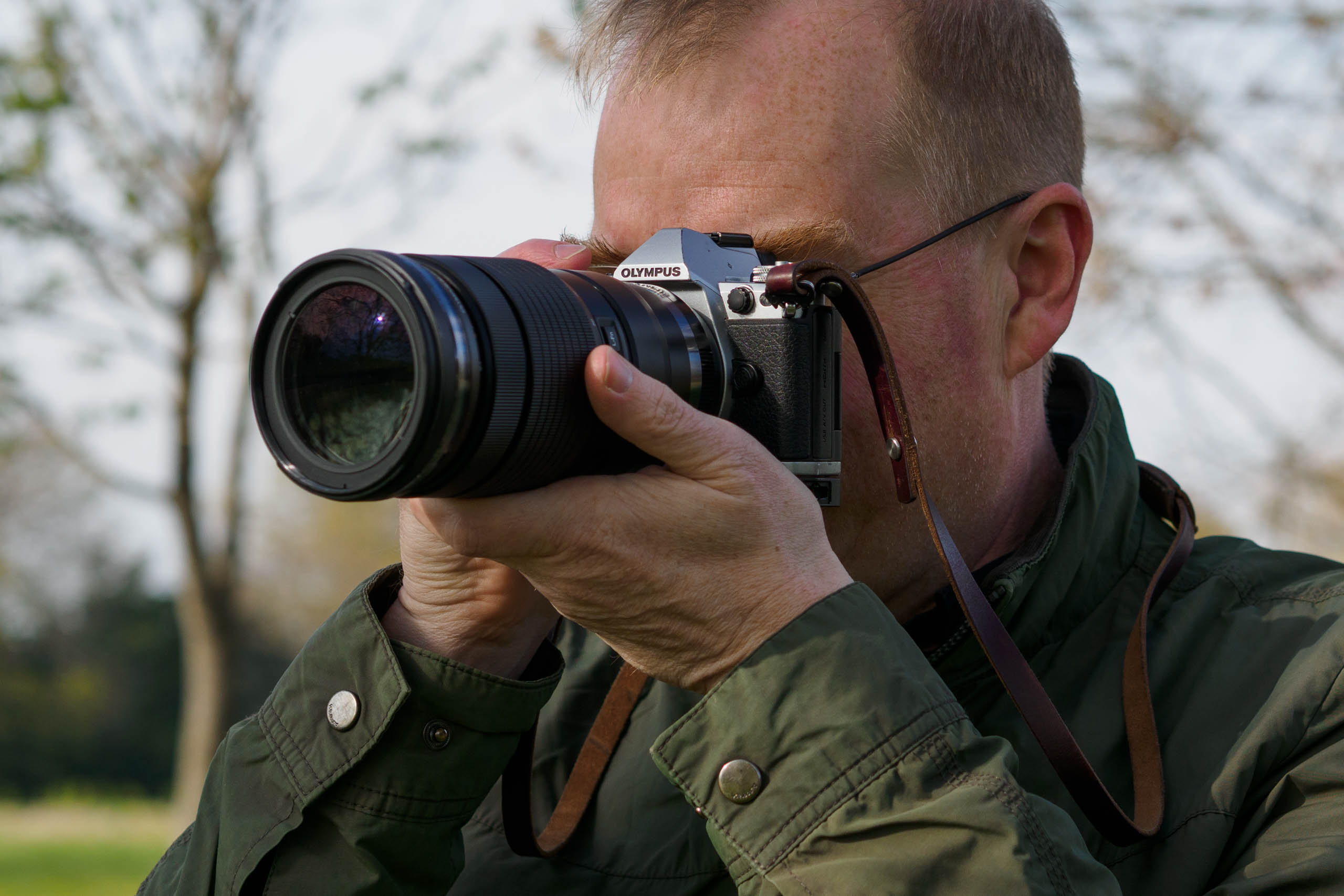
Smaller sensor systems have different strengths to full-frame, most notably in terms of portability and telephoto reach
Of course the apparent decline in Micro Four Thirds fortunes is inextricably linked with the inexorable rise of full-frame mirrorless, with Canon, Nikon, Panasonic and Sony slugging it out for market dominance. But I’d like to think that there’s still space in the market for multiple sensor formats. Full-frame does certain things extremely well for sure, but Micro Four Thirds (and indeed APS-C) has an alternative set of strengths. This doesn’t make it any less valid, just another tool that can be exploited to achieve your personal vision.
Olympus OM-D E-M5 Mark II: full specifications


